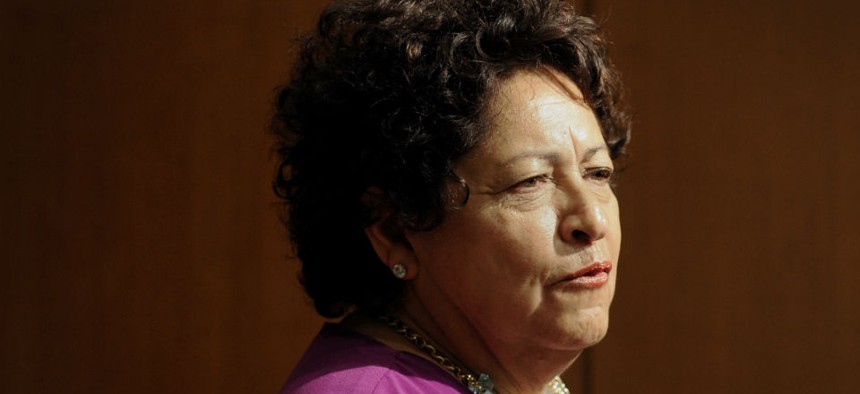Millennials' Romance With Government is Short-Lived
Survey shows younger feds are enamored with public service, but don’t see it as a long-term prospect.
Millennials working for the federal government enjoy their jobs, but aren’t staying in them very long, according to a new report from the Office of Personnel Management.
Those born after 1980 make up 16 percent of the current federal workforce, and 86 percent of Millennial respondents in the upcoming 2014 Federal Employee Viewpoint Survey said their work is important. Millennials also are more likely than other generations working for Uncle Sam to say that their bosses treat them with respect (83 percent) and support their development (66 percent). But that’s where the good news ends: The median amount of time Millennials stay in their jobs is just 3.8 years, and only one-third of those surveyed believed their agencies valued creativity and innovation. Thirty-four percent of those feds age 33 and younger reported being happy with their opportunities to climb the government career ladder.
Those statistics would suggest that the government is doing a decent job of recruiting Generation Y, but is having a hard time retaining them after a few years.
OPM Director Katherine Archuleta said during an Oct. 8 briefing with reporters that limited budgets have hindered agencies’ opportunities to provide training in recent years, but that “training dollars are becoming more available” and agencies are investing more. She also pointed out that Millennials don’t expect to have one job for their entire career, and that OPM has changed its recruitment approach for that generation by pitching federal service, in part, as “an incredible opportunity to build your resume.”
Archuleta has spent the past year as OPM director traveling across the country trying to attract Millennials, among other groups, to federal service. The agency has increased its use of social media, including LinkedIn, Twitter and Facebook, but it remains to be seen whether their efforts will ultimately pay off.
OPM is also promoting governmentwide initiatives, like GovConnect, designed to “foster a one government environment of collaboration and knowledge-sharing,” Archuleta has said. The project is aimed at cultivating innovation and creativity, allowing employees to try out skills on a new project that isn’t in their current comfort zone.
At the Housing and Urban Development Department, for instance, employees can use a program called “innovation time” that gives workers the opportunity to spend up to four hours a week on a project they are passionate about. Some employees have used the opportunity to create an app that helps people find affordable housing. The Environmental Protection Agency and the Health and Human Services Department also are participating in GovConnect.
Another project Gov U, modeled on HR University, aims to provide education and training resources governmentwide to federal HR professionals to improve employee recruitment and retention.
Diversity among Generation Y feds roughly mirrors the rest of the government workforce, according to OPM’s report. Ten percent of Millennials are Hispanic, compared to 8.2 percent of the total federal workforce; 15 percent of Millennials are African-American compared to 18 percent of the total federal workforce; 6 percent are Asian; and 1.5 percent, Native American -- about the same as the total fed population. About two-thirds of Millennials are white, the same proportion as the government overall.
Eight out of 10 Millennials work outside of Washington, D.C., like most federal employees, and the top jobs were in compliance inspection and support. The departments of Agriculture, Interior and Veterans Affairs boasted the greatest proportion of Millennials among agencies, while Idaho, Minnesota, Montana, and Wyoming employed the greatest number of young feds among the states.
OPM’s report on Millennials is the first in a series of similar analyses based on the 2014 FEVS data. The agency will publish the entire survey this fall, but officials would not say when.




